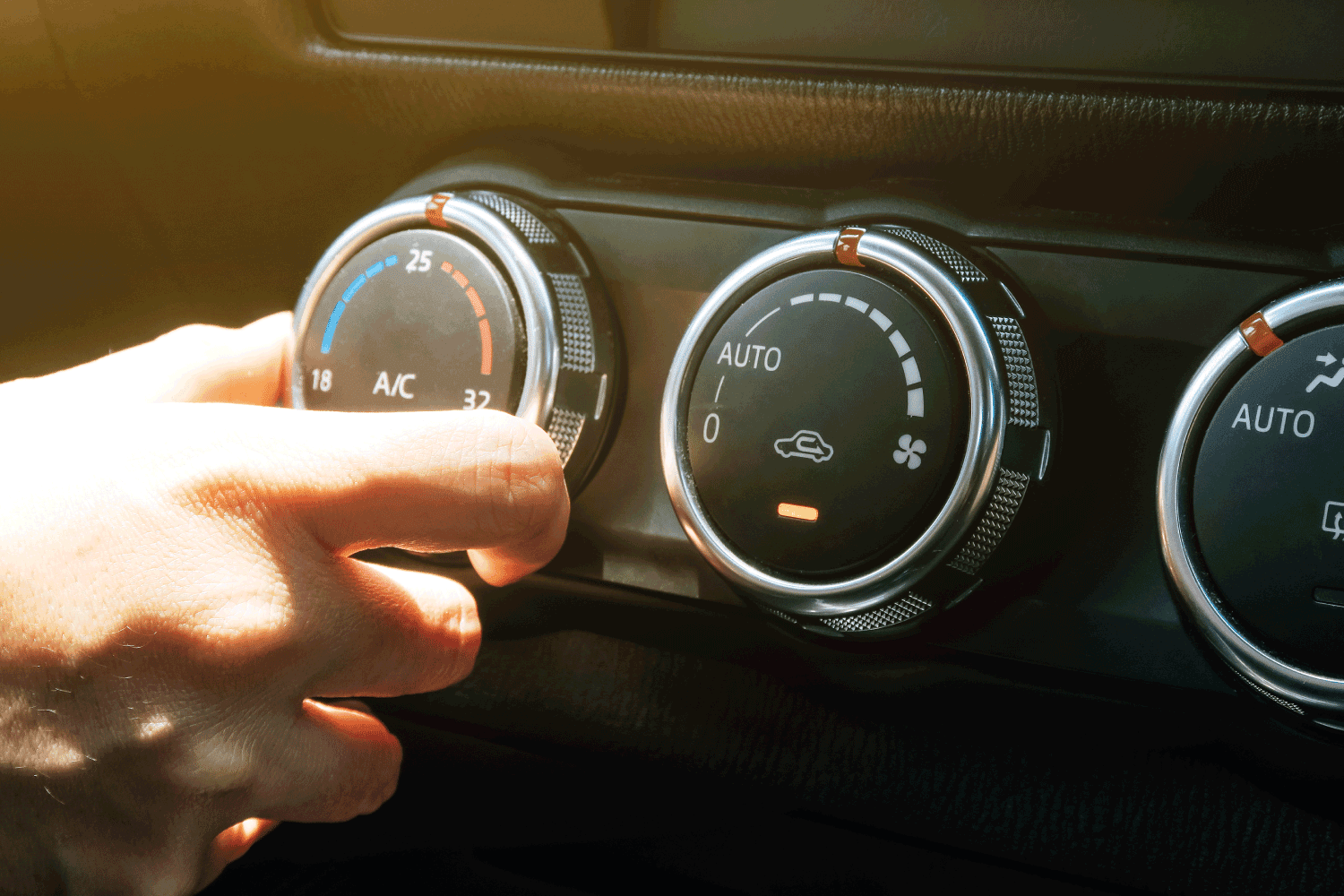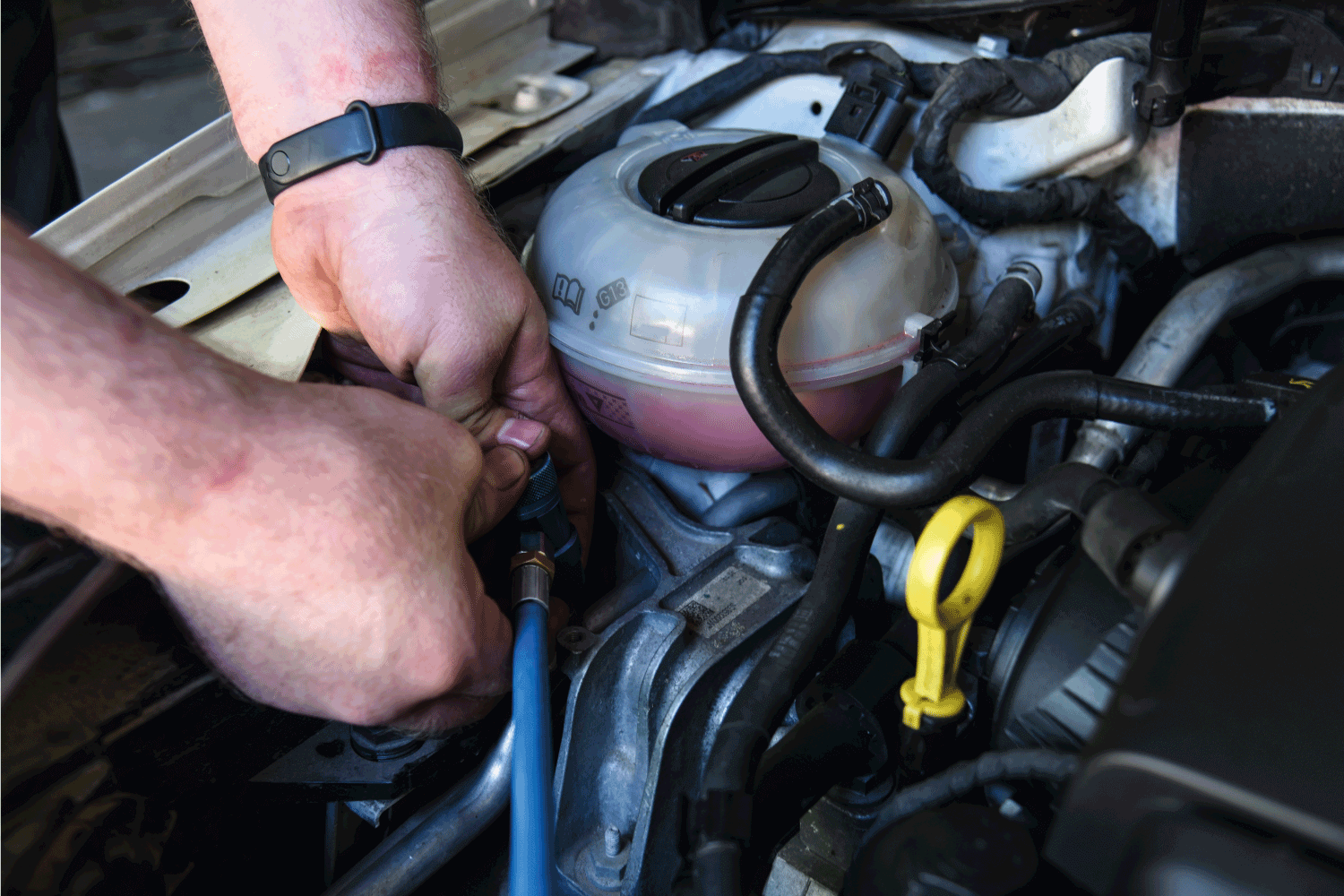One of the last things that you want to experience is your car's air conditioner malfunctioning or breaking down during a hot summer day. But your vehicle's AC may only need a Freon recharge. So now you're wondering about the signs that your car's air conditioner needs a refrigerant refill. We researched the answer to this concern for you and here’s what we found.
Your car may encounter these issues if it needs a Freon recharge:
- Warm air
- Freon leak
- No clicking sound
- Ice buildup
It’s also important to know how to refill your car’s Freon reserves if you experience the problems mentioned above. So continue reading as we tackle how to recharge your vehicle’s Freon. We’ll also talk about these indicators in greater detail.

How Can You Tell If Your Car’s Freon Is Low?
Different indicators can surface if your car’s Freon reservoir needs a recharge. Here are some of these possible signs:

Warm Air
Keep in mind that Freon is a cooling agent used to help air conditioning systems convert warm air into cold air. So if your vehicle's coolant reserves are low, the built-in cooling unit may not be able to complete this conversion efficiently, resulting in the system blowing warm air.
Freon Leak
Look underneath your vehicle after parking it at a safe site. If you find a pool that's yellowish-green in color building up beneath your car, then it has a Freon leak. It also means that your vehicle’s coolant reserves are diminishing faster than usual, leading to low supplies.
No Clicking Sound
Generally, you should hear a clicking sound each time you activate your car’s air conditioning system. This ‘click’ indicates the unit’s clutch, indicating that it’s about work as intended. But the clutch might fail to engage if you don’t hear this audible indicator. If so, it can mean that your car’s Freon is low.
Ice Buildup
A buildup of ice in the refrigerant line of a vehicle can mean that the cooling system is accumulating moisture at an abnormal rate. One possible reason for this problem is low Freon. It’s because the AC would need to work harder than before to provide its typical cold temperature range, increasing moisture.
You can also watch the video below to gain additional insight on the signs that your car needs Freon:
But what can you do if your car’s air conditioner only blows cold air to your feet? If you run into this problem, read our post on that subject to learn the solution.
Can You Put Freon In Your Car Yourself?
Recharging your car’s Freon is a relatively DIY-friendly task. But one mistake may lead to additional consequences, particularly for your safety.

So follow these safety tips before proceeding with this task:
- Wear safety equipment, such as gloves and goggles to avoid direct contact with the chemical.
- Avoid prolonged exposure to the coolant as the fumes might hurt your eyes, nose, and/or throat.
- Don’t pour Freon into your vehicle if there are signs of a refrigerant leak.
- Only purchase and pour refrigerant that’s compatible with your vehicle.
After completing the necessary preparations, park your car in a shaded area and open the hood. Then continue the procedure below.
What You’ll Need
- Compatible AC coolant
- Refrigerant dispenser kit
Step-by-Step Guide
Step #1: Prepare The Freon
Assemble the refrigerant-dispensing kit based on the manufacturer’s instructions. Take note that the seal needs to be airtight to prevent leakage during use.
Step #2: Find The Low-Pressure Refrigerant Fill Port
Check your vehicle owner’s manual to locate your car’s low-pressure refrigerant fill port. If the owner’s guide isn’t clear in indicating the location of this part, you can typically find it under the hood. It should be a reservoir marked by a plastic lid with the letter ‘L’ printed on it.
Once you find it, unscrew the seal with your hand. Doing so should expose the reservoir for the AC’s Freon.
Step #3: Connect The Dispenser Kit And Fill The Container
Again, follow the manufacturer's guidelines in installing the dispenser kit to the Freon reservoir. But this particular process generally follows these steps:
- Hold one end of the hose and the kit’s connector.
- Squeeze the Freon dispenser’s trigger to remove excess air.
- Attach the connector to the exposed reservoir and squeeze the dispenser’s trigger to release the coolant.
- Continue squeezing the trigger for about 5 to 10 seconds.
- Keep an eye on the pressure gauge and wait for 30 seconds before each application.
- Stop filling the Freon reservoir once it reaches the ideal pressure.
- Remove the coolant-dispensing kit and close the lid on the AC refrigerant container.
- Ignite the car’s engine and turn on the AC to test the performance of the recharged cooling system.
Check out this car AC recharge kit on Amazon.
Take note that the procedure mentioned in this section assumes that your car’s cooling unit doesn’t have a refrigerant leak or other problems. If other problems do exist, fix them before attempting to recharge the AC’s coolant.
Watch this video below if you want to learn alternatives to some of the steps above:
Take note that you can overcharge your car’s AC. Read our post on that topic to know what you can do in that situation.
Can A Car Lose Freon Without A Leak?
Take note that a car AC that’s working as intended shouldn’t lose Freon if the system isn’t functioning. So a vehicle’s air conditioner that loses refrigerant while it’s off typically means a leak exists in the framework.
Is It Okay To Keep Car AC Running With Low Refrigerant?
It’s not a good idea to turn on a car’s air conditioning system if it’s running low on refrigerant. Doing so will make the drive uncomfortable for the driver and the accompanying passengers since the AC will likely blow warm air.
Also, assemblies and parts in and around the cooling unit can suffer additional wear and tear because of the extra stress. The increased strain may also take a toll on the vehicle’s battery, which might drain faster than normal.

Which AC Coolant Is Best For Cars?
It’s important to note that coolants for vehicles usually fall under three different types:
- R-134a: A typically common AC coolant used by many vehicles that might promote greenhouse gas effects when used.
- R-1234yf: An eco-friendlier option than R-134a but some recharge kits with this refrigerant may not fit certain vehicles.
- Freon: Also called R-12, this coolant is relatively universal because of its compatibility with many vehicle AC systems.
After finding out which type of coolant is compatible with your car’s air conditioner, take time to at the vehicle refrigerants the market has to offer. Take note that different manufacturers develop varying efficacies for their products.
Although the different options seem similar, certain products may stand out from the rest. It’s because these excellent choices might provide better value for money when used.
Some of the coolants you may want to check include:
1. A/C Pro R134a Professional Formula Refrigerant
One of the advantages of using this car coolant recharging kit is its long hose. At 24 inches, you can reasonably far from the refrigerant reservoir without the need to get into an uncomfortable position to refill your vehicle’s coolant.
The manufacturer also mentions that this product complies with the US Environmental Protection Agency’s (EPA) Significant New Alternatives Policy (SNAP) program. In particular, it follows the standards imposed by the Clean Air Act of 1990 section 612 to prevent a significant risk to the environment.
Check out this product on Amazon.
2. Supertech R-134a Automotive Refrigerant
This manufacturer seemed to pay attention to the growing concerns of the environment as they made this product’s container to be compliant with different standards to its valve’s design. Like the previous product, this automotive refrigerant is also compliant with Section 612 of EPA’s SNAP program.
Check out this product on Amazon.
3. Honey Well Genuine Freon Can
Unlike other car AC recharging kits on the market, this particular system has a free gauge. That way, you can save money from purchasing a gauge to watch the pressure while refilling the car’s coolant.
Check out this product on Amazon.

Final Words
A car's AC system will generally show certain signs of low Freon. These indicators may range from only warm air blowing from the vents to ice buildup in the refrigerant lines. Remember to diagnose the problem at its core before attempting to recharge the air conditioner to avoid costly mistakes.




